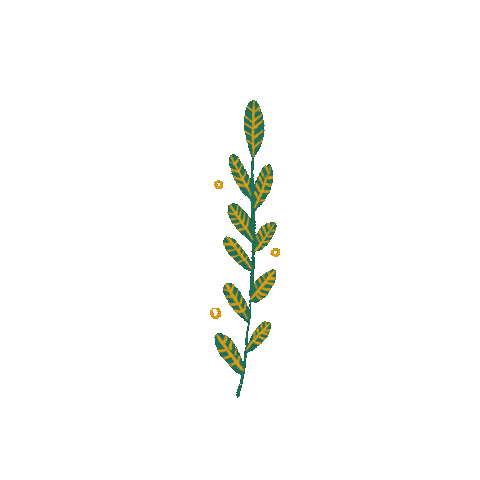

Painted murals on a wall in Western Kasai. (P. Loos Archives)
20th-Century Congolese Easel Painting
Thomas Bayet
The history of what is referred to as Congolese ‘easel painting’ began to develop around 1926, driven primarily by Europeans from Belgium and France who were quick to recognise the creative genius of the local population, and who were willing to flout the traditional European aesthetic canon. Georges Thiry and Gaston-Denys Périer, followed by Pierre Romain-Desfossés and Laurent Moonens, were a few of the visionaries working against the prevailing artistic trends.
While the majority of Europeans on the continent saw themselves as bringing culture to the Congo, some expatriates took a profound interest in the local culture. These individuals understood what many would not consider—that the indigenous population had their own history and culture, with forms and codes simply foreign to these new observers. In the face of opposition, and cultural and artistic impact, these fervent defenders of the local population led a battle to defend their beliefs. They attempted to understand the society around them and to search out these ‘unknown’ artists. But while their actions were essential, it is important to note that the emerging work was the sole creation of the indigenous artists, primarily Congolese, who drew on the depths of the African landscape for their inspiration.
Easel painting in the Congo is essentially quite recent, as the first documented works date to 1926–33. However, an account of the beginnings of this new form of painting shows that it clearly fell within an established pictorial tradition that is unfortunately not well-known and still poorly documented. It is important to distinguish between two general categories of paintings: first, scenes taken from everyday life, from the bush, as well as decorative images found on the walls of homes; and second, paintings and relief work painted on wood that appear to be ritualistic or cultural in nature. Other formats, such as ivory tusks or gourds, incorporate similar designs that fall more within the zone of engraving.
One is also reminded of the engraved Kongo gourds, or those of the Luba or Tschokwe—which are purely decorative or narrative—illustrating proverbs, maxims or adages. Again, these illustrate life in the bush, its fauna and flora, and hunting and fishing. When Robert Wannijn collected proverbs from the Bakongo in the 1930s, he asked them to illustrate the proverbs with drawings. The comparison of styles and subjects is striking, as much between the drawings that illustrate the proverbs and work by Masalai as between the animal scenes engraved on the gourds and the artists in the studio of ‘Le Hangar’, such as the work of Mwenze Kibwanga and Laurent Bumbu.

Ivory oliphant engraved and signed by Songo
(‘SONGO ASSALI’: Songo Made), depicting
Chief Akengai and his life at court.
(P. Loos; Photo: Paul Louis Brussels)

Drawing by Masalai of “the negro Patasoua picking palm kernels”.
(Private collection, ex P. Loos;
Photo: Michael De Plaen)


Georges Thiry had called Kasai ‘the country of fables’, [1] and in the Congo of the 1920s and ’30s, native culture was oral. There was no radio or television—only stories and fables told by the fireside among families, clans and villages after night had fallen. This culture was the principal source of inspiration for the engravings and paintings that decorated the ornate objects and walls, and which were then transposed onto paper with watercolours.


In many regions of the Congo, there was a register of abstract, purely geometric adornment alongside this figurative universe that presented both men and nature, as in the Mangbetu decorations. The most famous are known under the designation of Velours du Kasai (Kasai Velvet), but in reality the Bakuba had several techniques of embroidery, weaving and even tapa (beaten tree bark) to record the geometric registers of the Kasai for future generations. To the uninitiated eye, one might see a highly decorative art that leaves no room for empty space. Yet this crowded background allows an entire world of signs to emerge, symbols that refer to cosmologies, to the Kuba people’s myth of creation.

Other ethnic groups like the Bakongo, the Baluba and the Tschokwe also made abundant use of geometric designs. This geometry was not limited to textiles and matting, and was also found on objects as diverse as boxes, sculpted or engraved wooden bowls, musical instruments like sanzas and on bodies through scarification. It therefore should be no surprise that the artist Djilatendo, who lived midway between Kuba and Lulua, was adept at painting humans, fauna and flora, as well as geometrical designs—regularly marrying the figurative and abstract worlds in these compositions.
Sanza [thumb piano], Ubangi region.
(F. Boulanger; Photo: Yannik Van Ruysevelt)
[1] Thiry 1982, 25.
地址:香港薄扶林般咸道90號 地圖顯示位置
© 版權屬香港大學美術博物館 2021
Address: 90 Bonham Road, Pokfulam, Hong Kong View the location on Google Maps
Tel: (852) 2241 5500 Fax: (852) 2546 9659 Email: museum@hku.hk
© 2021 by University Museum and Art Gallery, HKU. All Rights Reserved






